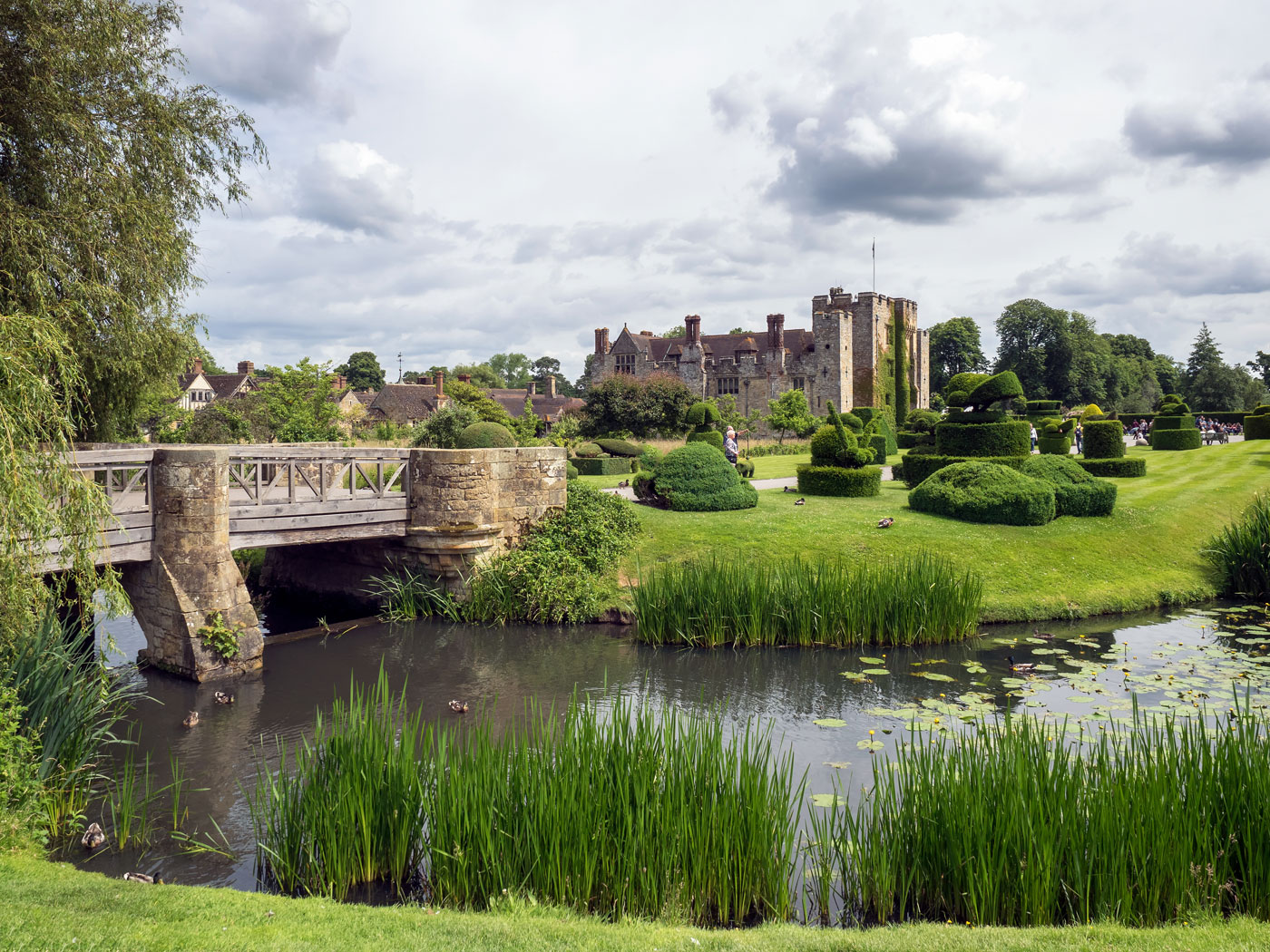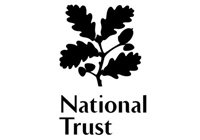- Home
- English Castles
- Hever Castle
VISIT HEVER CASTLE

A brief history
Construction of Hever Castle began in 1270 as a motte and bailey castle. In 1462 the castle was bought and converted into a manor by Geoffrey Boleyn, Lord Mayor of London, who added a Tudor dwelling within the walls. Hever Castle was to become the home of the Boleyns, one of the most powerful families in the country, who occupied the castle in the 15th and 16th century.
The building was completed by his grandson, Sir Thomas Boleyn, father of Henry VIII's unfortunate queen, Anne. Henry first met her in the gardens at Hever. Marrying Anne Boleyn in 1533 led to the King renouncing Catholicism and creating The Church of England.
In 1536 Anne Boleyn was arrested, accused of adultery and executed. Henry then married Jane Seymour, who produced the son and heir the king wished for so dearly.
After Sir Thomas Boleyn's death the castle passed to Anne of Cleves, Henry's fourth wife, and when she died it was sold to Sir Edward Waldegrave. From the Waldegraves it passed to Sir William Humfreys, Lord Mayor of London, in 1714, and then to Sir Timothy Waldo.
Hever Castle today owes its appearance and beautiful gardens to the first Viscount Astor, who bought the Castle in 1903 and built a mock Tudor village for his guests in the grounds. He poured money and 2000 workmen into the job of restoring the castle, a task which took four years to complete.
Things to do at Hever Castle
ROOMS AND EXHIBITIONS
The interior of Hever contains magnificent Tudor furniture, portraits, ancient tapestries, Tudor paintings and two prayer books inscribed and signed by Anne Boleyn.
You will come across exhibitions relating to Henry VIII and Anne, costumed figure exhibits in the Long Gallery and a room full of medieval instruments of torture.
Audio tapes are available to guide you through the splendid Castle Rooms.
Look out for
- The Drawing Room and Dining Hall
- Anne Boleyn's Bedroom and the Queens' Chamber
- The Book of Hours Room and the Library
- King Henry VIII's Bedchamber
- The Long Gallery and Astor Suite
- The Gatehouse
THE CASTLE COURTYARD
It is here that you can notice the difference in age between the 13th
century Gatehouse and the timber-framed Tudor additions. The front
portcullis is believed to be one of the oldest working portcullises in
the country. The drawbridge was reinstated by William Waldorf Astor
and can still be raised.
THE GARDENS
The award-winning gardens at Hever Castle have many magnificent areas to explore. Allow yourself a good two hours of your time to appreciate the effort of William Waldorf Astor and Joseph Cheal & Sons. Before William Astor bought Hever Castle in 1903 only a modest garden existed but now you have over 125 acres of fantastic grounds to enjoy.
ITALIAN GARDEN
This garden was designed to display William Waldorf Astor's collection of Italian sculpture. It covers about 5 acres and the Rose Garden, which contains over 4000 roses, forms one area within it.
The Italian Garden is bordered by two walls, the Pompeiian Wall with its small bays featuring stone and marble antiquities and the Pergola Walk. The Pergola Walk leads past a series of outstanding sculptures, urns and columns, all brought back from Rome by Astor in 1903. At one end of the Walk is a terrace, known as the Piazza, and a 35 acre lake.
TUDOR GARDEN
This garden is a series of small, sheltered gardens with neatly clipped hedges and showcasing the sorts of flowers and herbs that were grown in Anne Boleyn's day. You can find the Tudor Gardens running alongside the Yew Maze and bordering the outer moat of the castle.
These little gardens feature a Tudor style herb garden, a paved fountain garden surrounded by ballerina shrub roses, a chess garden where the chess pieces are cut from golden yew and in the middle of it all stands an astrolabe dating from the reign of Queen Anne.
BLUE CORNER AND TWO SISTERS' LAWN AND POOL
The Blue Corner is a lovely rockery garden which features massive sandstone rocks, planted with a theme of blue flowers and foliage. Stone steps lead from the Blue Garden to the Two Sisters' Lawn and Pool which is the site for Hever Festival Theatre.
Two Sisters' Pool has a border of blue iris and hydrangeas and there are tree peonies and a tulip tree near the edge of the pool.
THE LAKE
In 1904 William Waldorf Astor contracted 800 men to excavate and construct a 38 acre lake which was completed two years later. Two lakeside locations, the Italian Loggia and the Japanese Tea House Folly provide wonderful points from which to view the lake.
Have fun renting a boat or walking around the nature trail on Lake Walk.
SUNDAY WALK AND CHURCH GILL WALK
These walks follow the stream in a circular walk that lead to Hever Church and were created by William Waldorf Astor in a very different style. These are nice relaxing walks away from the crowded main areas of the garden.
DIANA'S WALK AND FAITH'S GARDEN
Faith's Garden is on a path known as Diana's Walk. It has been planted with thousands of perennial plants along the outer moat towards the lake. Faith's Garden opened in 2018 and is named after the castles's owner Mrs Guthrie in celebration of her 50th wedding anniversary and to recognise her passion for the gardens at Hever.
THE TWO MAZES
The Yew Maze was created by William Waldorf Astor in 1906 and more then 1000 yew trees were used to build this amazing maze. There are a lot of pathways inside to get lost in, almost a quarter of a mile of pathways, to be precise.
The Water Maze is a maze with a difference. You need to try and reach the stone grotto in the centre without getting wet. It was built in 1997 on Sixteen Acre Island and is a popular challenge for all ages.
Location
Hever Castle
Hever, Edenbridge, Kent TN8 7NG
Official Website: Hever Castle

